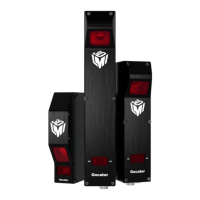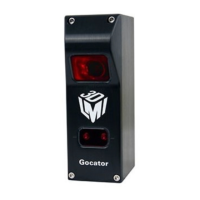Gocator Line Profile Sensors: User Manual
• 676
l Gocator 1300 series
l Gocator 2100 series
l Gocator 2300 series
l Gocator 2400 series
l Gocator 2500 series
l Gocator 2880
l Gocator 3210 and Gocator 3500 series
Typical Workflow
The following is the typical workflow for creating and deploying custom measurement tools:
l Develop and build tools using the GDK project files and libraries in Microsoft Visual Studio, targeting
Win32.
l Debug the tools using the emulator on a PC.
l Build the tools into a custom firmware binary.
l Upload the custom firmware to a sensor.
Installation and Class Reference
The GDK project and library files are in the Gocator GDKpackage (14524-x.x.x.xx_SOFTWARE_
GDK.zip). To download the package, go to http://lmi3d.com/support, choose your product from the
Product Downloads section, and download it from the Download Center.
After downloading the package, extract the package to a directory.
You can access full installation and setup instructions, as well as the complete class reference
documentation, by double-clicking the Guide shortcut under the root directory.
Required Tools
The GDK requires Microsoft Visual Studio 2017, as well as various other tools provided in the Gocator
GDKPrerequisites package (14525_3.0.0.0_SOFTWARE_GDK_Prerequisites.zip), which is
available in LMI's Downloads Center (see above for download location).
Getting Started with the Example Code
The best way to get started is with the GDK sample code. You can find the sample projects under
Gocator\GDKSampleApp. This project is ready for you to build and use as a template for new projects.
Start by opening GDK.sln in Visual Studio 2017.

